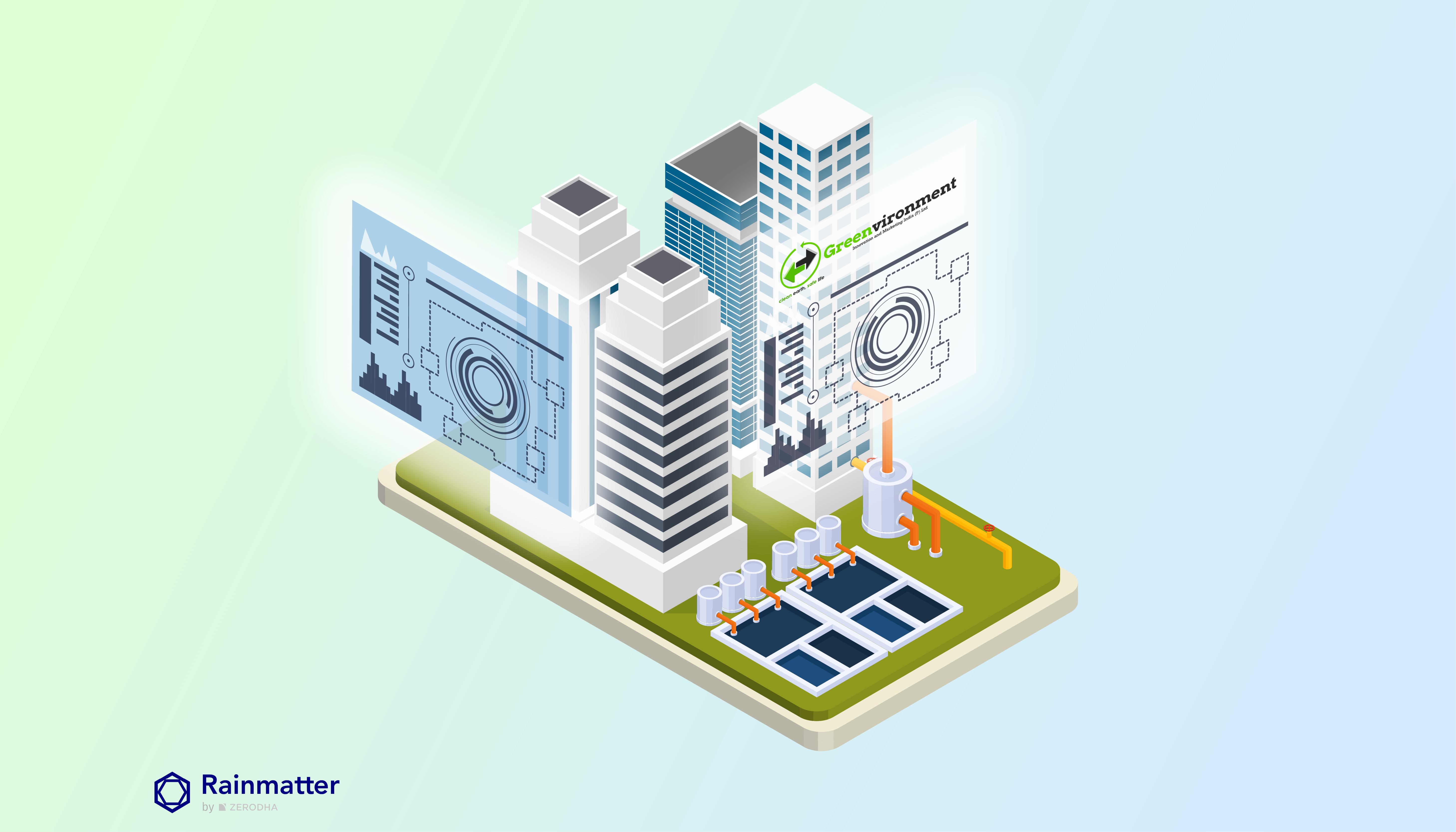
Greenvironment: Greening the building environment with water
Any building we walk into, be it apartment blocks, office buildings, shopping malls, hospitals, movie halls, etc., all use water for air-conditioning, kitchens, washrooms, and landscaping. Currently, this operational aspect of buildings is highly inefficient. In some cases, such inefficiency can even lead to public health issues. Some buildings can improve efficiency by becoming “water neutral,” meaning they don’t rely on precious water resources.
Greenvironment Innovation is a water-tech startup that uses IoT (Internet of Things) and AI (Artificial Intelligence) to turn buildings into smart ecosystems.
Water efficiency: from public health hazard to green building awards
Founder of Green Innovation, Varun Sridharan, explains that commercial buildings use water primarily for air-conditioning, kitchens, washrooms, and landscaping. This requires two types of treatment rooms: one for fresh water from various sources and another for treating grey and blackwater before recycling or discharging it into city drains.
Agriculture consumes 70 to 90 percent of fresh water. Of the remaining supply, municipal corporations prioritise households. As a result, commercial users, including large residential apartment complexes, often depend on groundwater or water tankers, which source water either from municipal pipes outside the city or from groundwater. This approach increases costs and can lead to periodic shortages.
On the output side, sewage must be treated and reused. When done well, this reduces demand for fresh water. When done poorly, it can cause public health issues through air-conditioning or flushing systems, or pollute water bodies if discharged into city drains.
Regulations address both quantity and quality concerns. They require commercial buildings to manage water efficiently through groundwater restrictions, treatment and recycling mandates, and zero liquid discharge policies. Implementing these, however, is challenging. It requires hardware, processes, and skilled personnel. And being commercial operations, building managers often focus on minimising costs.
Some commercial buildings pursue green building certifications to attract more discerning customers, leading to higher profits.
Solutions: hardware, software, and common sense
Greenvironment offers a range of solutions:
Hardware: IoT sensors and flow meters designed for Indian conditions and pricing.
Real-time monitoring: Digital twins that allow users, managers, and owners to track all water stocks and flows. This system has been extended to monitor air quality as well.
Automation: Processes that reduce human error in critical areas, like chlorination and backwashing.
Sustainability: Practical ways to achieve water efficiency, such as improved rainwater harvesting.
Sridharan is deeply committed to the issue of water as a public health risk, in addition to its climate implications. During filming, he shared that he had lost his son to such an issue. We included that part with his permission. All our founders have personal stories that led them to their startups, which they see as their life’s work. This one was especially moving.
We hope we can acknowledge the seriousness of water scarcity, or more accurately, the crisis of water management. A mix of policy enforcement and incentives is needed: stricter regulations, better compliance, and a willingness to pay a premium for water efficiency.
In the meantime, stay safe.

Hi Hansi,
Thanks for putting out the useful and some of the eye-opening content. I would like you to make some series on eco-friendly house construction, so that people like me would be conscious if we are constructing new house in turn reducing the carbon footprint